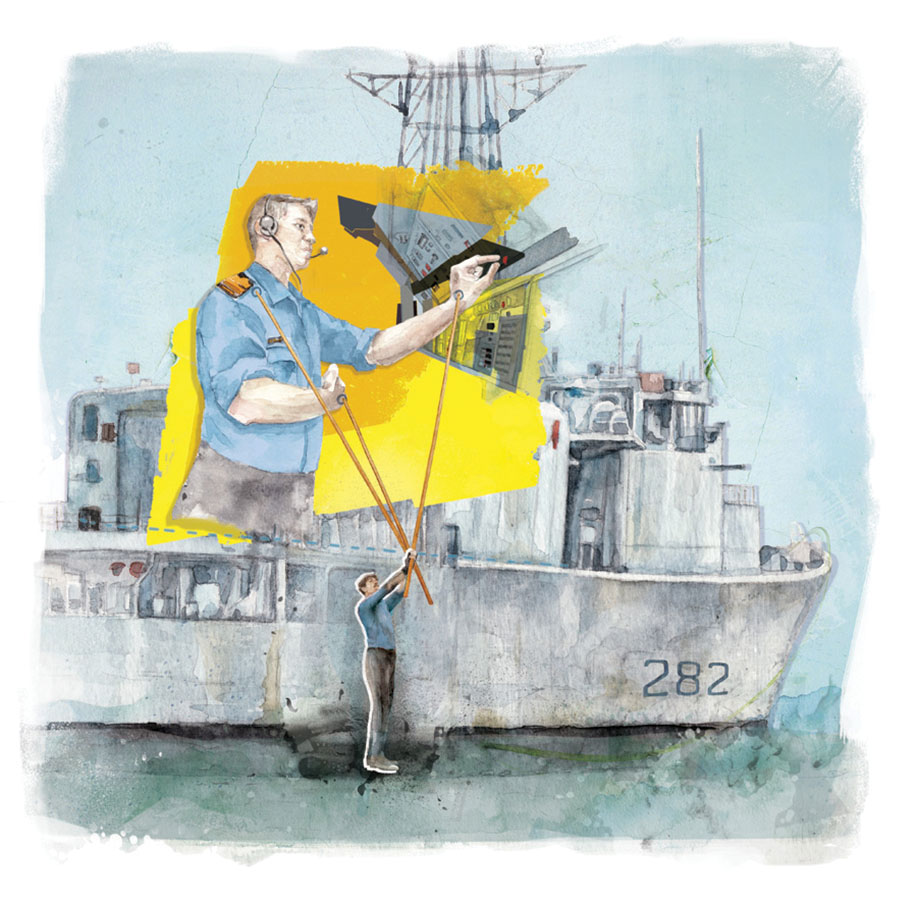From the Department of High-Stakes Charades
Twenty-five years ago, Richard Austin
served in the Persian Gulf War aboard
HMCS Athabaskan. One of few people in
Canada trained on the ship’s newest weapons
system, he found himself in a predicament
We had only two weeks to get ready after Prime Minister Brian Mulroney decided to send a naval task group to the Persian Gulf in August 1990 after Saddam Hussein’s Iraqi army invaded Kuwait. The problem was that our ships weren’t exactly ready to go, so they threw all sorts of new equipment on board, including a close-in weapons system called the Phalanx.
Civilian and military people worked around the clock to get the ships ready, and they basically did away with the paperwork and the bureaucracy. My equipment was new and state-of-the-art, a complete radar and anti-missile defence system that could shoot down missiles or aircraft that got close to the ship. But no one in the command structure had any clue how this thing worked. Only 12 of us in Canada were trained at the time, and I was one of them.
I was put on the ship to operate and maintain this one particular piece of equipment. It was very high-tech. On the way over, I briefed command on how it worked, but they really hadn’t trained with it. We did work-up training all the way across the ocean and I had never sailed with a finer crew. We really were one, which was our motto on HMCS Athabaskan—We Fight as One—and it was true.
But when command saw that a non-commissioned officer like me was in charge of the weapon, they said, “According to the protocol, that can’t be—there has to be an officer in charge.” To get around that, they populated the remote-control panel up in the operations room and we essentially pretended that the remote-control panel was in charge of the weapon. That’s the way it was on paper, but in reality it wasn’t. We were just pretending.
An officer came down to me and said, “We all know that those people are not familiar with how this operates and we’re just putting them there as a token thing.”
This weapon had only a 10-kilometre range on its radar, and the rules of engagement were that you could take out anything within 8 kilometres if you didn’t know what it was. So that was my envelope. With a missile travelling at Mach 1 at 10 miles, I had only 30 seconds to react. So I’m in the bottom of the ship with my local control panel pretending that the officer in the operations room, who is untrained and unfamiliar with the equipment, is going to push the button.
The scenario that was put to me was:
“If we don’t know what it is, we want you to take control. If you make a mistake and shoot down a friendly, which happens, we never had this conversation and you’ll be hung. If you shoot down a bad guy, you’re a hero.”
And that’s how I ended up playing a long game of charades during the Persian Gulf War.
Advertisement






















